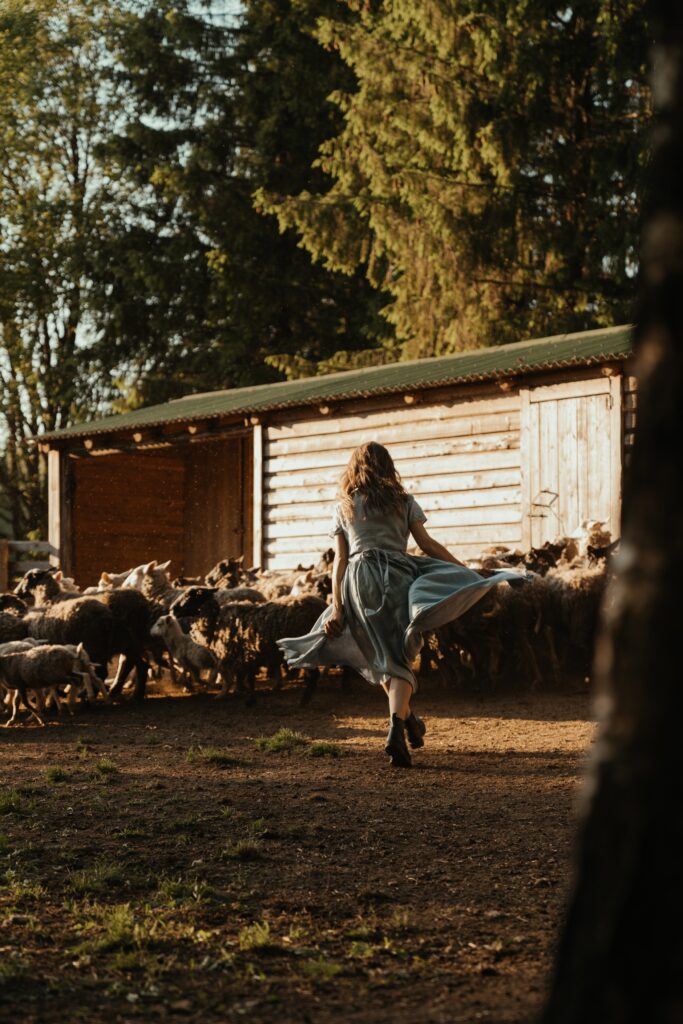Have you ever seen the documentary, “Minimalism: A Documentary About The Important Things“? It came out in 2015 and was my first introduction to minimalism. It’s about two guys who shed light on what minimalism is and what it means to be a minimalist. You’ll notice in the film that each person who was interviewed for the film gives a different definition of what minimalism means to them. Now, I don’t necessarily identify as a minimalist and that you should live minimally but I do believe that you should intentionally with less. Intentional Living versus Minimalism. At first glance, these two lifestyles are very similar in the goals they achieve for you. Intentional living is about making purposeful choices that help you achieve your future goals. However, minimalism is about intentionally living with less. Nonetheless, there are also slight differences as well. Knowing what they are may help you decide which approach works best for you!
Intentional living versus minimalism
What is an intentional lifestyle?
As I discussed in my blog post on intentional living, the lifestyle involves making choices on purpose. You think through what you want to do, you plan how you’re going to do it, and then you do it. Most of us desire to live for some kind of purpose, and it’s just a matter of finding it. Intentional living is asking yourself why you do what you do and being happy or content with the answers to the “hard questions”. It is about living your “why”. That being said, I think minimalism is a type of intentional living.
I know! But hear me out, there are numerous examples of intentional living including co-housing, living in a moral community, or practicing homesteading. In some ways, you may have already been living an intentional life through various passions you might have like writing, creating physical art, or yoga! Maybe you believe in protecting the environment and strive to live a sustainable life daily. All of these are examples of choosing to live intentionally and people who find their way of doing it usually seem to be happier.
But here’s another example. Let’s say your goal is to retire at 45. One way to achieve it is to live minimally, cut your monthly expenses, and therefore need less money to live in retirement. You could also go a different route–make a plan to earn more money and save it in a retirement account. You have the option to do this by changing careers, taking a higher-paying job, etc. And it doesn’t require you to live with less.
You can live intentionally without practicing minimalism, but you can’t achieve a minimalist lifestyle without being intentional. It’s intentional living versus minimalism.
What is a minimalist lifestyle?
As I stated above, minimalism can be considered a type of intentional living. People who are minimalists are deliberate in their choices of removing the excess or clutter in their lives and choosing to pursue things that are more meaningful to them. The goal is to create a more organized and clear space for the things that add joy.
Minimalists practice the lifestyle in a variety of ways. One focus of it is decluttering. It’s the act of choosing to remove items that don’t add joy to your life. This can be done using several methods like the Minimalist Method, Packing Party, the four-box method, and the one method. I personally love the KonMari Method.
Some like to take the lifestyle to the extreme by choosing to have very few items in their space. Others have also enjoyed moving into tiny houses or living a life of travel through #rvlife. These are a few of several ways people have practiced minimalism. The beauty of the lifestyle is you can find your way of doing it.
How are intentional living and minimalism the same?
Intentional living and minimalism are the same in that they both involve making deliberate choices in pursuit of more joy and meaning in life.
People generally find they’ve increased their fulfillment in life by adopting these lifestyles into their routines.
How are intentional living and minimalism different?
Intentional living is a broader idea of living on purpose in a variety of ways. In contrast, minimalism typically focuses more on living intentionally by reducing items in your home. I would say that minimalism and intentional living are about creating more “white space” in your life.
You can practice minimalism and still be intentionally living, but you can live intentionally without practicing minimalism.
How do I know if minimalism or intentional living is for me?
Intentional living is arguably for everyone because we all have made purposeful choices in some manner that we believe will make us happier. It’s about creating an awareness of the overall larger picture of your life and how when you’re 80, 90, or even 100 years old, you would have wanted to live your life.
As far as whether minimalism is right for you, you can practice the lifestyle to find out. Take time to declutter your home of items that you don’t feel add meaning or as Marie Kondo says, “spark joy” to your life. Think about the things that matter to you. See how you can incorporate more of those items and experiences into your life.
You may find that minimalism works for you, or you might decide that you should try another form of intentional living. As I said earlier, I don’t necessarily identify as a minimalist and intentionally living with only what you need to be able to have that white space in your life but I’m also still learning and that may change one day. You can search and test out different ways of living intentionally to see what works best for you!
Other intentional lifestyles you can try
If you decide that minimalism doesn’t suit you, here are a few other ways of living intentionally that might interest you.
There is veganism which is a lifestyle of choosing to only eat foods that are dairy-free and not made with meat products or even bypassed meat products. They also choose not to wear clothing or use any products that are made of animal parts.
There is spirituality and religion. These are two very different concepts. You can be spiritual without being religious but I would argue that you can’t be religious without being spiritual as well. Anyway, you can incorporate a religious or spiritual practice in your life by attending a facility or organization, praying, and reading any form of spiritual/metaphysical or religious texts. It is said that spiritual and religious individuals experience a sense of peace in life and have more happiness.
There is homesteading which is not like living in the early 1800s in the west where you live in a wagon while building a homestead to farm and manage. It is more like a life a lifestyle of self-sufficiency. It’s characterized by subsistence agriculture, and home preservation of food, and may also involve the small-scale production of textiles, clothing, and craft work for household use or sale. You can imagine living like Laura Ingalls Wilder without being her and a little bit of technology to help you create this lifestyle. I am working toward this by starting my very own garden this year. More on that later!

How are intentional living and minimalism similar?
To reiterate, I would say that minimalism and intentional living are about creating more “white space” in your life. I like to think of minimalism as a tool for helping you live intentionally. It’s a practice within the overall practice of intentional living.
Minimalism brings about the act of living with less which means less maintenance, fewer expenses, and easier choices. Each of these savings empowers you to create the life of your dreams on your own time.
Minimalism requires a daily commitment to keep your home, time, and mind clutter-free. Without being intentional about where you live, what you buy, and how you spend your free time, you’d slide back into old habits and ultimately, your old identity.
People who live intentionally follow many of the same lifestyle choices and tips of minimalists.
Which lifestyle is right for me?
Well here’s the good news! There’s no reason you have to choose between intentional living and minimalism.
I’ve done minimalism in the past and it was a great tool to get me to examine where my priorities were and where I wanted more “white space” in my life. Now, it may be because I thought it was slightly rigid or maybe it was my interpretation of what minimalism meant to me at that time, but I felt it no longer served me and I needed to open up my horizons. Also, I have a problem – I’m obsessed with throw pillows and blankets. They make me so happy but I’m sure I don’t need as many as I have and they probably would be better served elsewhere but I just can’t bring myself to minimize them. At least, not yet. And as I said, that may change one day.
But it was my gateway to being intentional and intentionally living with less. As I mentioned earlier, minimalism is just one path to being intentional. If you feel that your cluttered home is stopping you from living intentionally, give minimalism a try.
There’s no one “best” way to live your life. The important thing is that it’s a life worth living.
Final thoughts
I will never tell anyone how to live, especially in their homes because I believe a home should tell the story of everyone who lives there, rests there, and plays there. And finding a way of living that brings you joy and meaning is a continual process of trial and error. You should be mindful that no matter what lifestyle you choose, whether intentional living, minimalism, veganism, or any other isms, that life will never be perfect. Your home will evolve as your life goes on and that’s perfect!
Isn’t that the best news you’ve heard yet?
Love,






[…] party. Start to sell, donate, or trash physical items in your life that are not serving you. This doesn’t have to mean minimalism, but it can. Almost all of us are hanging on to physical items that we no longer need or want. Everything from […]